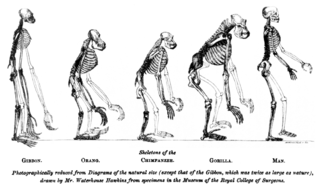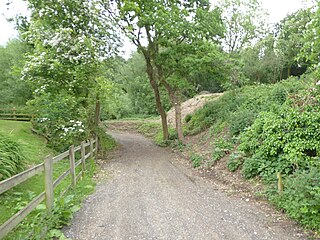| Site of Special Scientific Interest | |
 | |
| Area of Search | East Sussex |
|---|---|
| Grid reference | TQ 426 096 [1] |
| Interest | Geological |
| Area | 1.0 hectare (2.5 acres) [1] |
| Notification | 1996 [1] |
| Location map | Magic Map |
Southerham Works Pit is a 1-hectare (2.5-acre) geological Site of Special Scientific Interest in Lewes in East Sussex. [1] [2] It is a Geological Conservation Review site. [3] [4]

A Site of Special Scientific Interest (SSSI) in Great Britain or an Area of Special Scientific Interest (ASSI) in the Isle of Man and Northern Ireland is a conservation designation denoting a protected area in the United Kingdom and Isle of Man. SSSI/ASSIs are the basic building block of site-based nature conservation legislation and most other legal nature/geological conservation designations in the United Kingdom are based upon them, including national nature reserves, Ramsar sites, Special Protection Areas, and Special Areas of Conservation. The acronym "SSSI" is often pronounced "triple-S I".

Lewes is the county town of East Sussex and by tradition of all of Sussex. Lewes remains the police and judicial centre for all of Sussex and is home to Sussex Police, Lewes Crown Court and HMP Lewes. It is a civil parish and is the centre of the Lewes local government district as well as the seat of East Sussex County Council at East Sussex County Hall. The population of Lewes is now around 17,000. The settlement is a traditional market town and centre of communications and, in 1264, it was the site of the Battle of Lewes. The town's landmarks include Lewes Castle, the remains of Lewes Priory, Bull House, Southover Grange and public gardens, and a 16th century timber-framed Wealden hall house known as Anne of Cleves House. Other notable features of the area include the Glyndebourne festival, the Lewes Bonfire and the Lewes Pound.

East Sussex is a county in South East England. It is bordered by the counties of Kent to the north and east, Surrey to the north west and West Sussex to the west, and to the south by the English Channel.
This site exposes layers of the Chalk Group dating to the Upper Cretaceous between 90 and 87 million years ago. It is a key site for understanding the lithostratigraphy of the period and the environments of its chalk sea as well as the evolution and taxonomy of Upper Cretaceous fish. [5]

The Chalk Group is the lithostratigraphic unit which contains the Late Cretaceous limestone succession in southern and eastern England. The same or similar rock sequences occur across the wider northwest European chalk 'province'. It is characterised by thick deposits of chalk, a soft porous white limestone, deposited in a marine environment.

Lithostratigraphy is a sub-discipline of stratigraphy, the geological science associated with the study of strata or rock layers. Major focuses include geochronology, comparative geology, and petrology. In general a stratum will be primarily igneous or sedimentary relating to how the rock was formed.

In biology, taxonomy is the science of defining and naming groups of biological organisms on the basis of shared characteristics. Organisms are grouped together into taxa and these groups are given a taxonomic rank; groups of a given rank can be aggregated to form a super-group of higher rank, thus creating a taxonomic hierarchy. The principal ranks in modern use are domain, kingdom, phylum, class, order, family, genus and species. The Swedish botanist Carl Linnaeus is regarded as the father of taxonomy, as he developed a system known as Linnaean taxonomy for categorizing organisms and binomial nomenclature for naming organisms.
There is access to the southern end of the site from Southerham Lane.

















